39 label each part of the diagram of an atp molecule below
Glycolysis | Cellular respiration | Biology (article) | Khan Academy Energy payoff phase. In a series of steps that produce one NADH and two ATP, a glyceraldehyde-3-phosphate molecule is converted into a pyruvate molecule. This happens twice for each molecule of glucose since glucose is split into two three-carbon molecules, both of which will go through the final steps of the pathway. ATP Diagram | Quizlet Start studying ATP. Learn vocabulary, terms, and more with flashcards, games, and other study tools. Start studying ATP. Learn vocabulary, terms, and more with flashcards, games, and other study tools. ... a high energy molecule that transfers energy in cells. ADP (function) a lower-energy molecule that can be converted into ATP. Tri. three. Di ...
8.1 Energy and Life Quiz Flashcards | Quizlet Adenosine Triphosphate (ATP) compound that cells use to store and release energy Primary Producer 1st producers of energy rich compounds Consumer rely on other organisms for their energy needs and food supply Food Chain flow of energy through the ecosystem by the process of eating and being eaten Autotroph organisms that make their own food

Label each part of the diagram of an atp molecule below
1. Draw and label the parts of an ATP and ADP molecule. . 2. Explain ... Adenosine triphosphate (ATP) consists of an adenosine molecule bonded to three phophate groups in a row. In a process called cellular respiration, chemical energy in food is converted into chemical energy that the cell can use, and stores it in molecules of ATP. ATP - powering the cell - Cellular respiration - BBC Bitesize ATP (adenosine triphosphate) is the energy-carrying molecule used in cells because it can release energy very quickly. Energy is released from ATP when the end phosphate is removed. Once ATP has ... What are the three parts of an ATP molecule Flashcards What are the 3 parts of an ATP molecule adenine, ribose, 3 phosphate groups Energy is released from ATP when a phosphate is removed Organisms such as plants that make there own food are called autotrophs Plants gather energy with light-absorbing molecules called pigments Most plants appear green because chlorophyll doesn't absorb green light
Label each part of the diagram of an atp molecule below. Label the parts of an ATP molecule? - Answers The three parts of an ATP, adenosine triphosphate, molecule are:A sugar (ribose)3 phosphates (the energy is stored in the unstable covalent phosphate bonds)Adenine (a double ring of carbon and ... Bio exam 2 Flashcards | Quizlet Label the anatomy in the image with Thylakoid space, Thylakoid membrane, and Stroma.Then, drag H2O, ATP, and NADPH to where they react or are formed. In photos, Photosystem II splits water to replace the electrons it ejects. Splitting H2O creates oxygen and two hydrogen ions as by-products (not shown). AP Biology Chapter 8 Review Flashcards | Quizlet Label the diagram below and indicate how cellular work is done by ATP Define phosphorylation A cell that can couple the energy of ATP hydrolysis directly to endergonic processes by transferring a phosphate group from ATP to some other molecule, such as the reactant What are coupled reactions? ATP cycle and reaction coupling | Energy (article) | Khan Academy At the center of the molecule lies a five-carbon sugar, ribose, which is attached to the nitrogenous base adenine and to the chain of three phosphates. The three phosphate groups, in order of closest to furthest from the ribose sugar, are labeled alpha, beta, and gamma.
Adenosine Triphosphate (ATP) - Definition, Structure and Function Structure of ATP This is a structural diagram of ATP. It is made up of the molecule adenosine (which itself is made up of adenine and a ribose sugar) and three phosphate groups. It is soluble in water and has a high energy content due to having two phosphoanhydride bonds connecting the three phosphate groups. Functions of ATP Energy Source What are three parts of an ATP molecule? | Socratic Adenine, Ribose, and three Phosphate groups. Explanation: ATP molecules are used by all living organism as energy to carry out life functions. Also notable, ATP stands for Adenosine Triphosphate. This molecule is composed of three parts: Adenine Ribose Three Phosphate Groups Here is a picture: Answer link Oxidative phosphorylation | Biology (article) | Khan Academy Energy released in these reactions is captured as a proton gradient, which is then used to make ATP in a process called chemiosmosis. Together, the electron transport chain and chemiosmosis make up oxidative phosphorylation. The key steps of this process, shown in simplified form in the diagram above, include: Steps of cellular respiration | Biology (article) | Khan Academy 3 years ago. Oxidative phosphorylation is a process involving a flow of electrons through the electron transport chain, a series of proteins and electron carriers within the mitochondrial membrane. This flow of electrons allows the electron transport chain to pump protons to one side of the mitochondrial membrane. Meaning that it is not the same.
What are the three parts of an ATP molecule Flashcards What are the 3 parts of an ATP molecule adenine, ribose, 3 phosphate groups Energy is released from ATP when a phosphate is removed Organisms such as plants that make there own food are called autotrophs Plants gather energy with light-absorbing molecules called pigments Most plants appear green because chlorophyll doesn't absorb green light ATP - powering the cell - Cellular respiration - BBC Bitesize ATP (adenosine triphosphate) is the energy-carrying molecule used in cells because it can release energy very quickly. Energy is released from ATP when the end phosphate is removed. Once ATP has ... 1. Draw and label the parts of an ATP and ADP molecule. . 2. Explain ... Adenosine triphosphate (ATP) consists of an adenosine molecule bonded to three phophate groups in a row. In a process called cellular respiration, chemical energy in food is converted into chemical energy that the cell can use, and stores it in molecules of ATP.


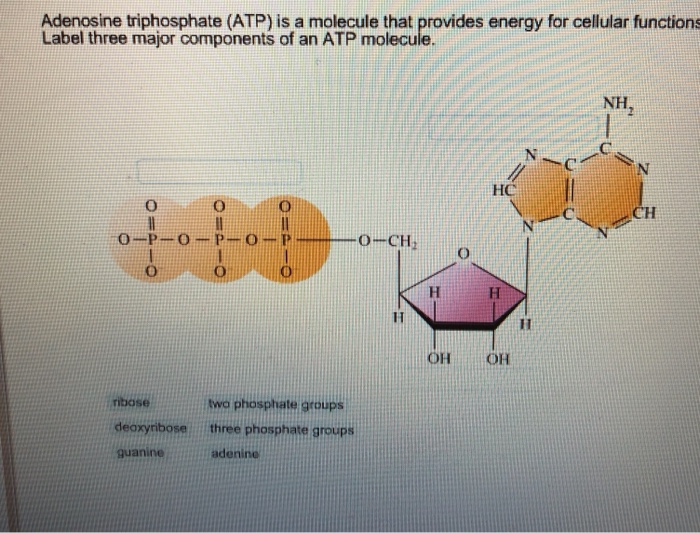



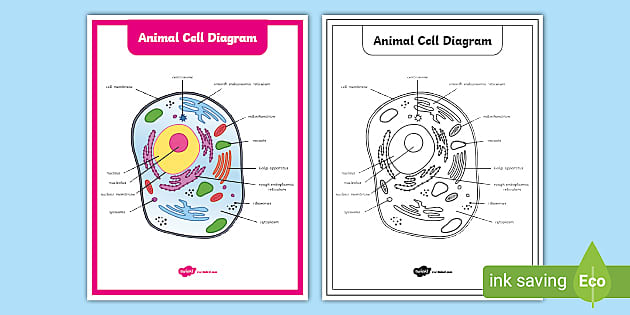
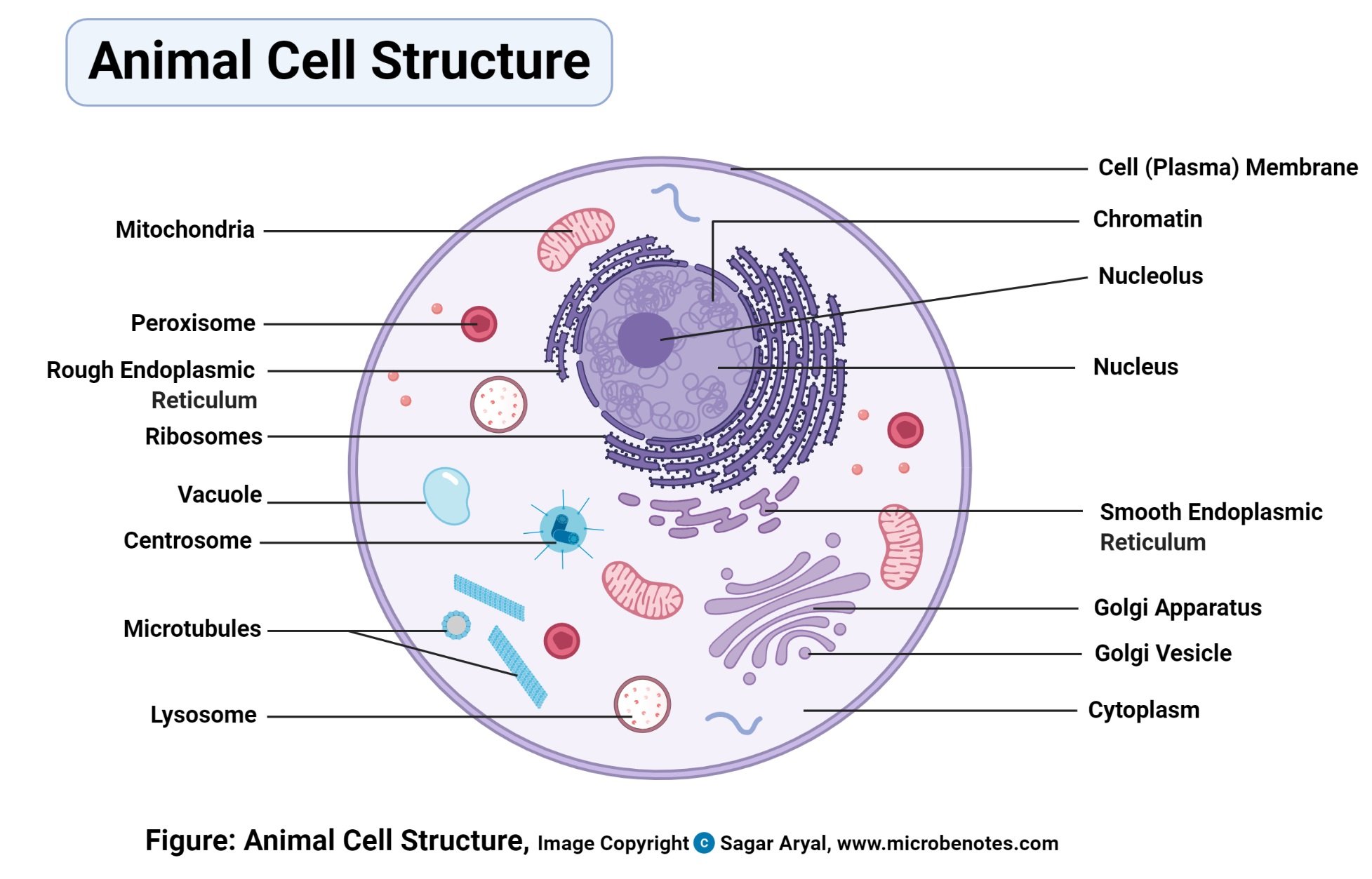



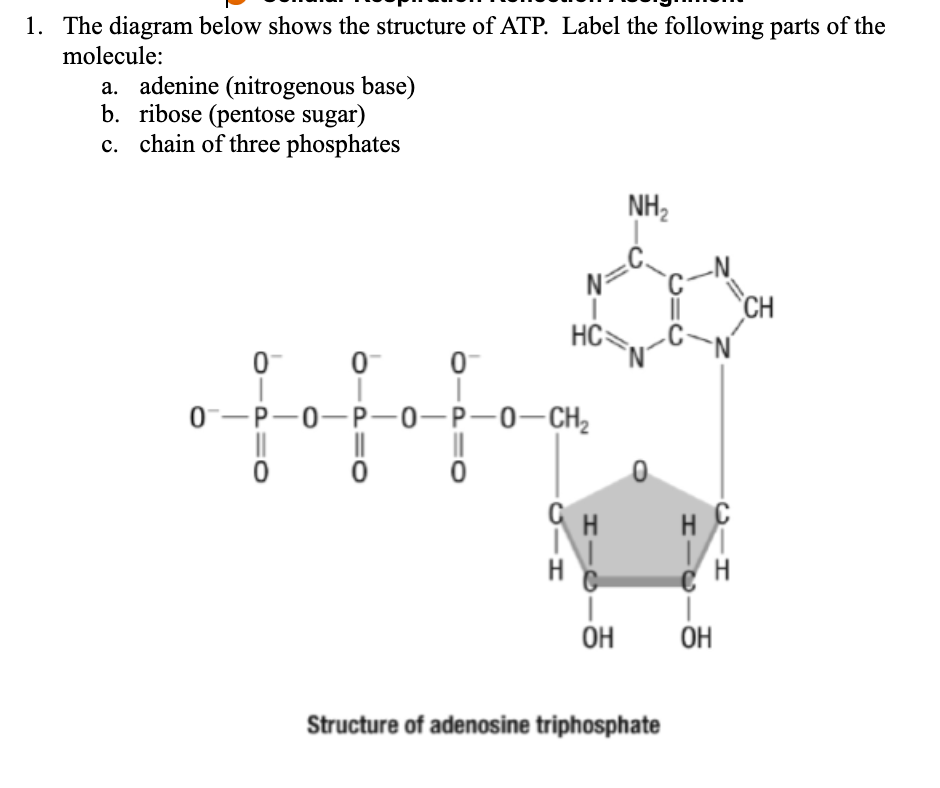
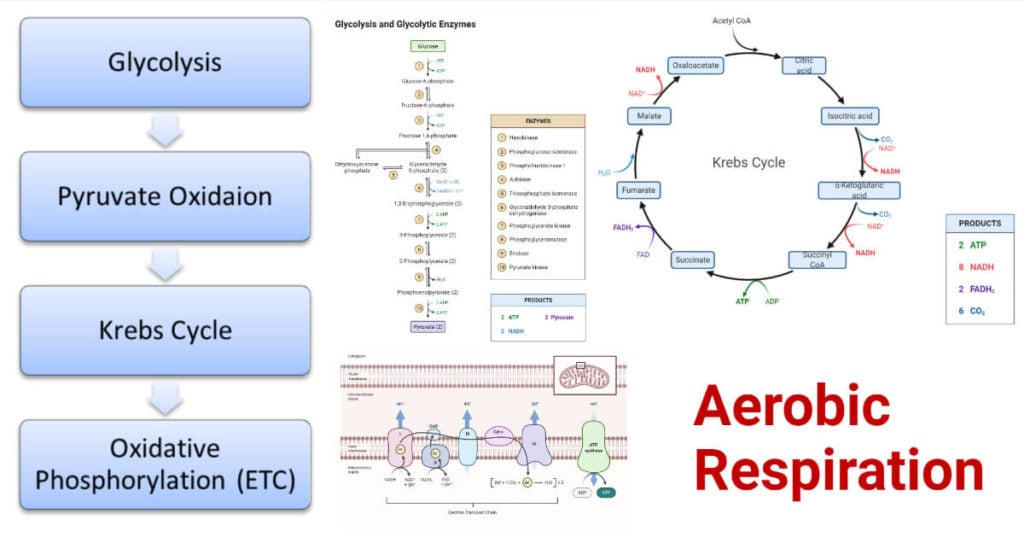





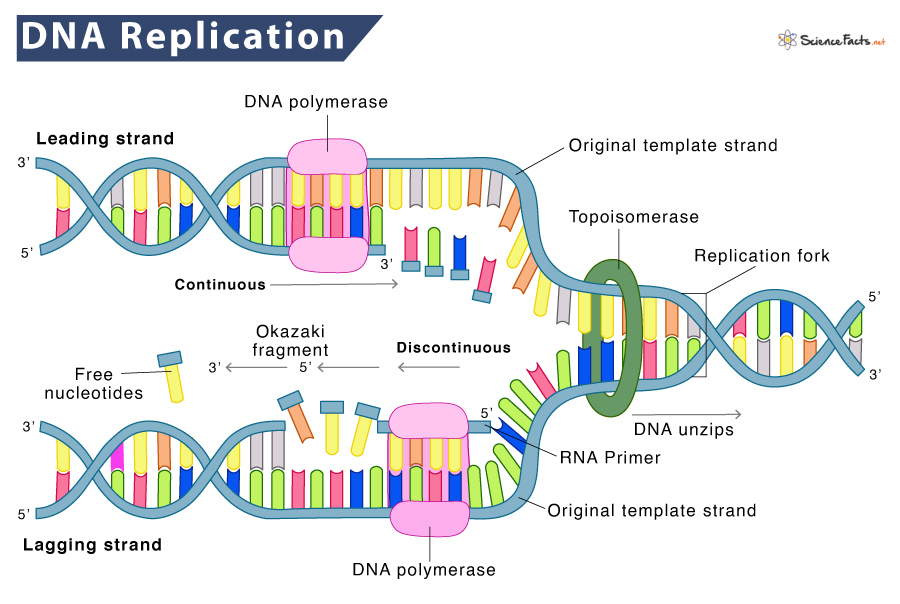






![Identify the three components [(i),(ii) and (iii)] of ATP ...](https://haygot.s3.amazonaws.com/questions/887889_ba7e3b5cc09d418996079c2f5db4b569.png)
:max_bytes(150000):strip_icc()/Glycolysis-58a468ce3df78c47584cd4d3.jpg)


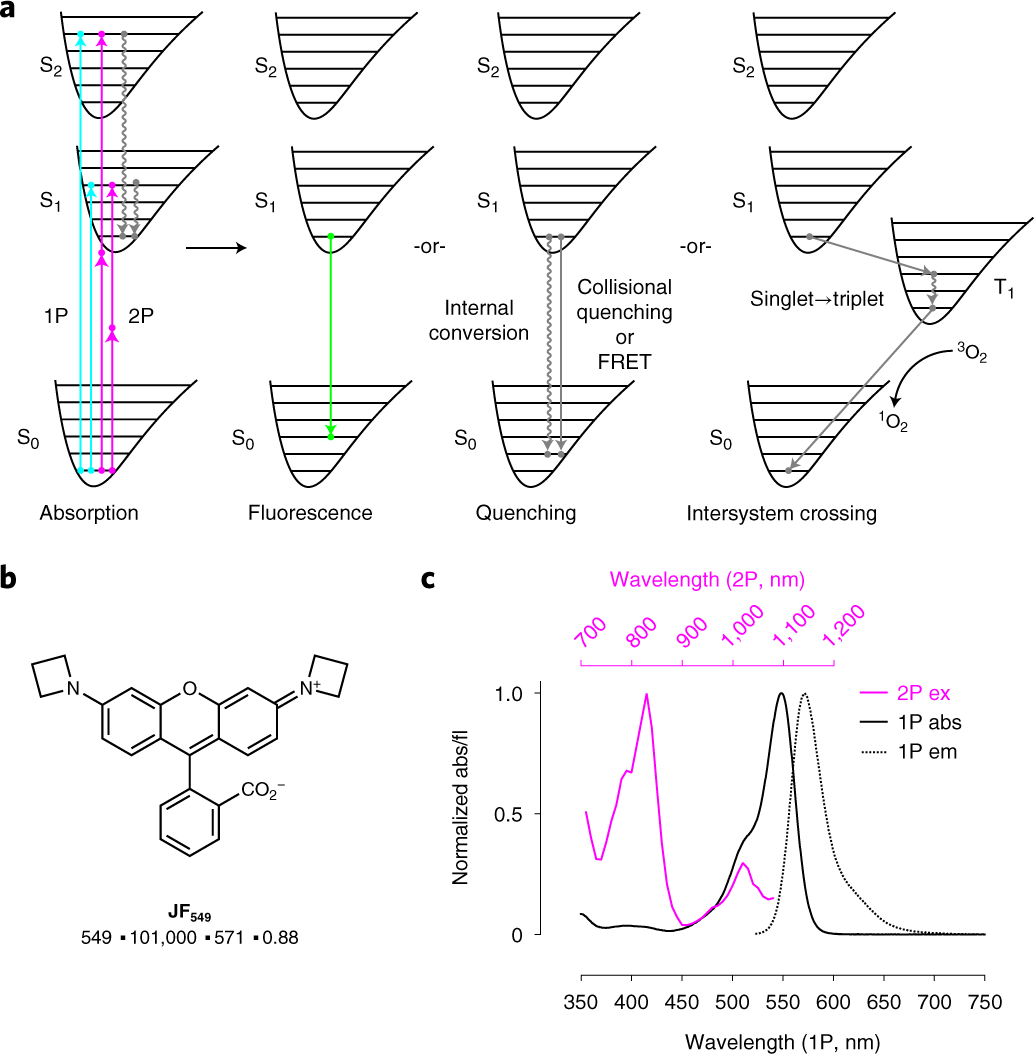

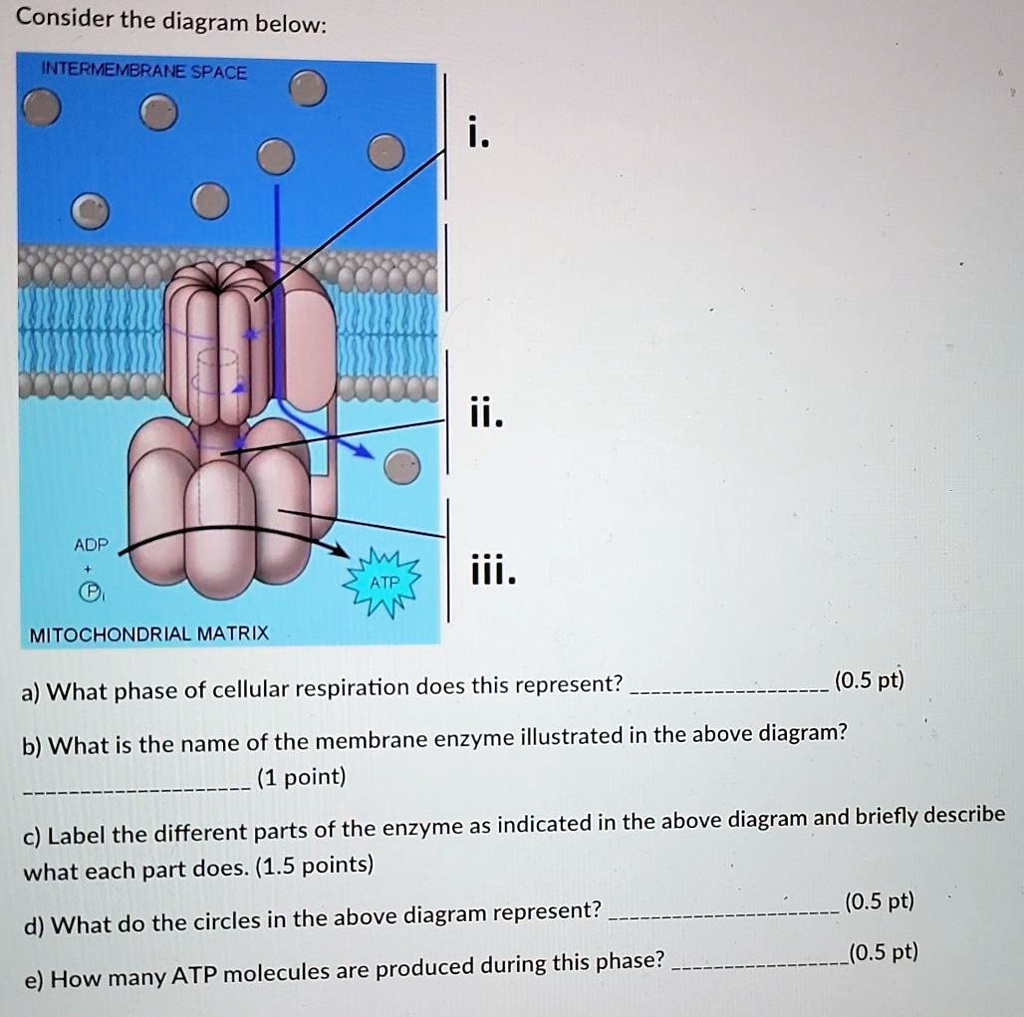

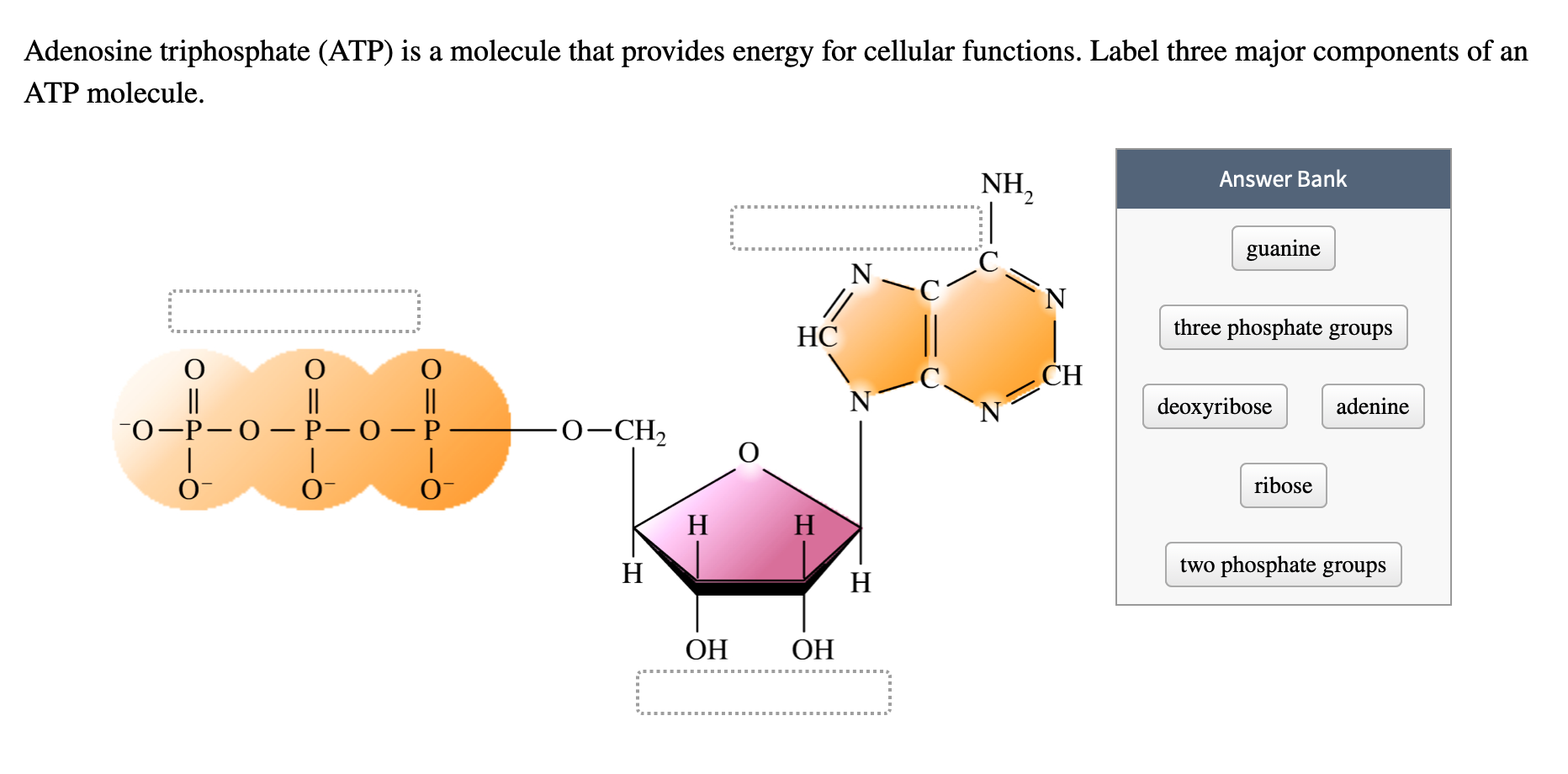

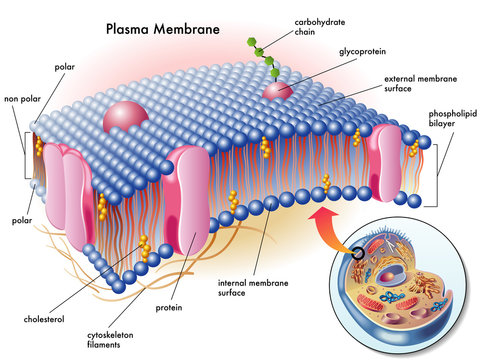
Post a Comment for "39 label each part of the diagram of an atp molecule below"